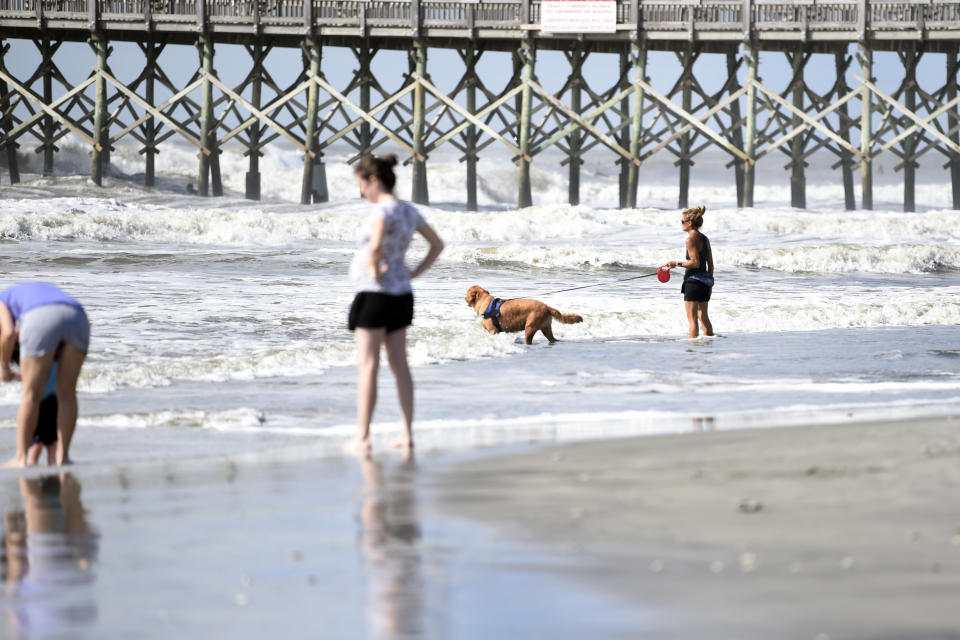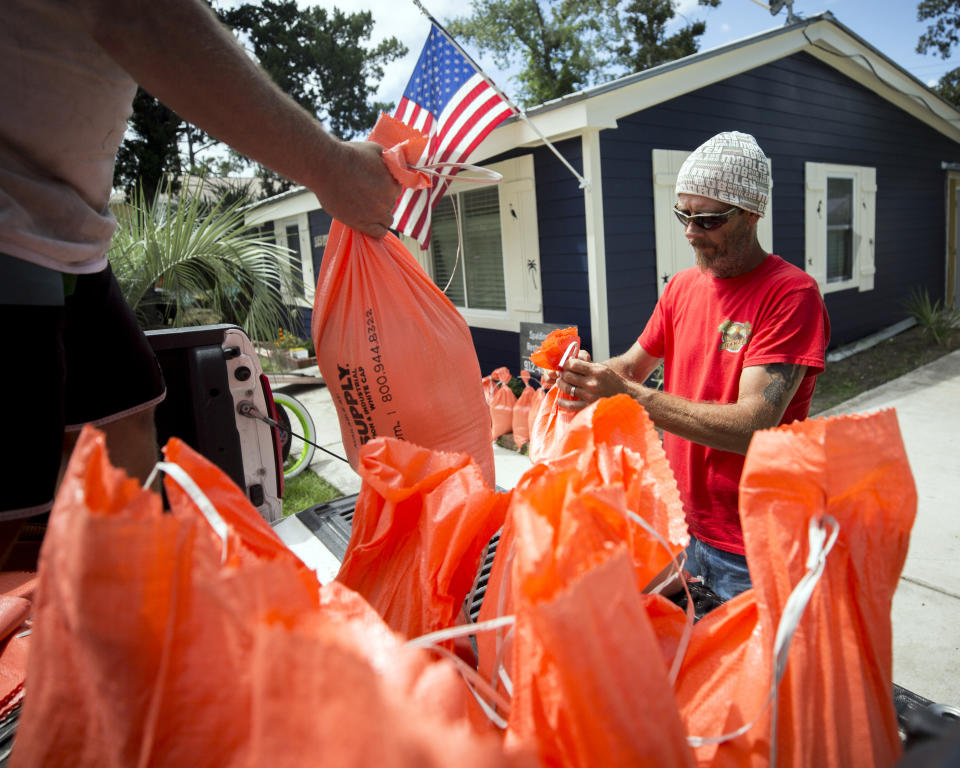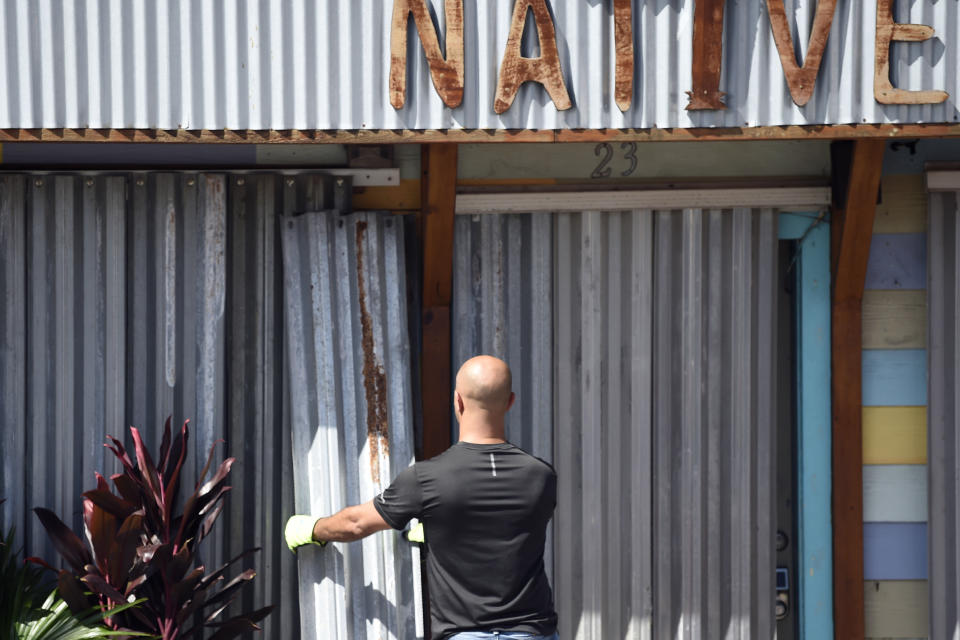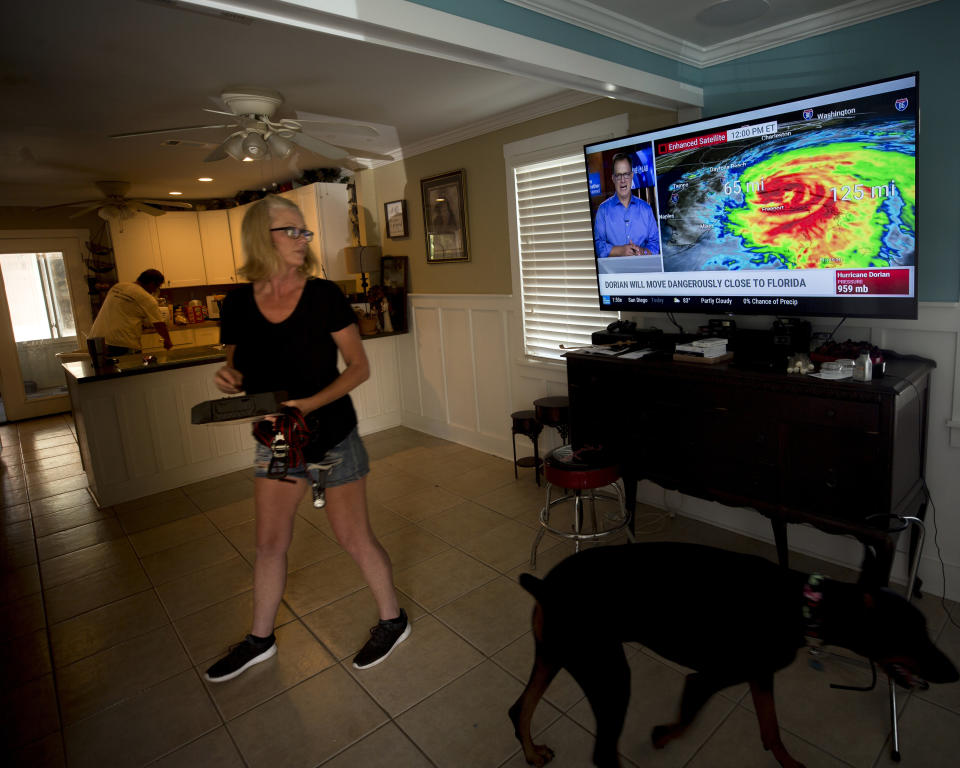Weather-tested residents brace for Dorian on Southeast coast
FOLLY BEACH, S.C. (AP) — Weather-tested residents along the coasts of Georgia and the Carolinas were using their experience with past storms to guide them Tuesday as they readied their homes for Hurricane Dorian and decided whether to heed evacuation orders.
"Here we are," said Ed Bandarovich as he strolled along sunlit Folly Beach outside of Charleston, South Carolina. "It's a beautiful beach day, but who knows what tomorrow's going to bring."
Bandarovich, 70, recently moved to Johns Island, South Carolina, from Woodstock, New York, where he experienced the devastating inland effects of Superstorm Sandy in 2012.
Bandarovich said he had been ready for Sandy's power and its heavy rains but was caught off-guard by the 75 mph (121 kph) wind gusts that swept through the area in the storm's wake. The winds scattered debris throughout his neighborhood, turned fallen boards and branches into projectiles and knocked out his power for days, he said.
"It's all in the preparation, in being aware of what's going to happen, or could happen," Bandarovich said, noting that he had boarded up his Johns Island home just in case.
Dorian weakened to a Category 2 hurricane Tuesday after slamming into the Bahamas as a terrifying Category 5 storm with 185 mph (298 kph) winds.
Practically parking over the Bahamas for a day and a half, the storm pounded away at the islands Tuesday, devastating thousands of homes. At least five deaths were reported, with the full extent of the damage far from clear.
The weakened storm pushed northwest at 5 mph (8 kph) with hurricane-force winds extending up to 60 miles (95 kilometers) from its center. While weaker, the storm was continuing to grow in size, according to the National Hurricane Center. The threat of a direct hit on Florida had all but evaporated, but Dorian was expected to pass dangerously close to Georgia and South Carolina — and perhaps strike North Carolina — on Thursday or Friday.
South Carolina Gov. Henry McMaster ordered mandatory evacuations along the state's 190-mile (306-kilometer) coast and turned all lanes of Interstate 26 into a one-way evacuation route heading west. Georgia officials did the same with Interstate 16 after Gov. Brian Kemp ordered coastal evacuations.
Attorney Henry Grimball, 71, said he and his wife would likely ride out Dorian in their narrow four-story home in Charleston's downtown historic district.
"These houses have been here since 1770," Grimball said, gesturing to the white and pastel houses dotting his neighborhood. "They've been through a lot."
Grimball said he would reconsider, however, if the storm became a Category 3 or stronger hurricane: He remembers the devastation from Hurricane Hugo in 1989.
Hugo slammed into South Carolina's coast with winds gusting as high as 108 mph (174 kph) in Charleston, killing several dozen people, causing nearly $6 billion in damage and toppling a massive magnolia in Grimball's backyard.
"It gets to be really dangerous," he said.
Forecasters and public officials were concerned that regardless of the storm's strength, it could dump a dangerous amount of water on the Carolinas.
In September 2018, slow-moving Hurricane Florence was only a Category 1 storm as it gradually came ashore near the border of the two states. But it dumped nearly 3 feet (1 meter) of rain in some areas, unleashing widespread flooding that left dozens dead and causing $600 million in damage. Thousands of coastal residents were evacuated before the storm.
In 2016, Hurricane Matthew dumped up to 16 inches (41 centimeters) of rain in North Carolina, flooding and causing about $320 million of damage downstream in South Carolina.
Dorian could dump as much as 10 inches (25 centimeters) of rain along South Carolina's northeastern regions, the National Weather Service said.
On Georgia's Tybee Island, about 18 miles (28 kilometers) east of Savannah, Joey Spalding said he had decided not to take any risks with Dorian after watching back-to-back storms swamp his island home, in 2016 and then in 2017.
"I'm not losing all my stuff this time," the 50-year-old building contractor said Tuesday as he emptied the contents of his low-lying bungalow into a U-Haul. "Even if it doesn't come into the house, I'm not taking a chance."
Irma sent about 3 feet (1 meter) of seawater from storm surge into Spalding's house before he had even finished repairing the damage from Hurricane Matthew the year before. Irma ruined most of his furniture and forced him to replace drywall inside the house and siding on the outside.
"During Irma, I lost almost everything," Spalding said.
In preparation for Dorian, Spalding said he planned to wrap the house in plastic up to shoulder height and pile sandbags in front of the doors.
"In this case, I don't have to come into a house full of junk," he said. "I'm learning a little as I go."
___
Associated Press reporter Russ Bynum in Tybee Island, Georgia, contributed to this report.
___
Meg Kinnard can be reached at http://twitter.com/MegKinnardAP






